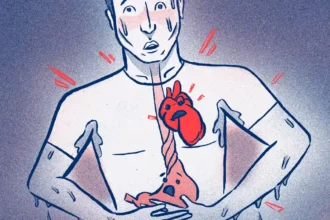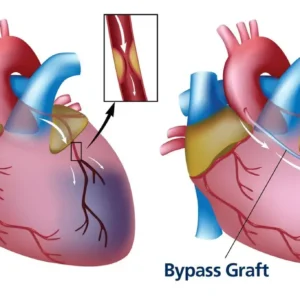Anxiety attacks can be debilitating and disruptive, especially when they happen at work. Whether you have been diagnosed with an anxiety disorder or experience occasional anxiety, it’s important to know how to manage and cope with anxiety attacks in the workplace. In this article, we will provide you with tips and strategies to help you deal with anxiety attacks at work.
Understanding Anxiety Attacks
Anxiety attacks, also known as panic attacks, are sudden and intense waves of fear or anxiety. They can be triggered by a specific situation or come out of nowhere. During an anxiety attack, you may experience physical symptoms such as a rapid heartbeat, sweating, shaking, and shortness of breath. You may also experience psychological symptoms like fear of losing control, fear of dying, or feeling disconnected from reality.
It’s important to remember that anxiety attacks are a natural response to stress and do not reflect your character or ability to cope.
Tips to help you manage anxiety attacks at work
1. Identify Your Triggers
The first step in managing anxiety attacks is to identify your triggers. Triggers can be situations, people, or thoughts that cause you to feel anxious or stressed. Once you identify your triggers, you can take steps to avoid or manage them. For example, if public speaking triggers your anxiety, you can practice relaxation techniques or seek professional help to overcome your fear.
2. Practice Relaxation Techniques
Relaxation techniques like deep breathing, meditation, and progressive muscle relaxation can help you manage anxiety attacks at work. When you feel an anxiety attack coming on, take a deep breath and count to ten. Repeat this process until you feel calmer. You can also try meditation by focusing on your breath and letting go of negative thoughts. Progressive muscle relaxation involves tensing and relaxing your muscles to release tension and promote relaxation.
3. Talk to Someone
Talking to someone you trust can help you manage anxiety attacks at work. Whether it’s a coworker, friend, or family member, sharing your feelings can help you feel less alone and more supported. You can also seek professional help from a therapist or counselor who can provide you with coping strategies and tools to manage your anxiety.
4. Exercise Regularly
Exercise is a natural stress reliever and can help you manage anxiety attacks at work. It releases endorphins, which are natural mood boosters, and reduces stress hormones like cortisol. You don’t have to do a strenuous workout to reap the benefits of exercise. Even a brisk walk or yoga class can help you feel calmer and more centered.
5. Create a Supportive Work Environment
Creating a supportive work environment can help you manage anxiety attacks at work. Talk to your supervisor or HR representative about your condition and ask for accommodations if needed. For example, you can ask for a quieter workspace or flexible work hours. You can also create a calming workspace by adding plants, using aromatherapy, or playing soothing music.
6. Take Breaks
Taking breaks throughout the workday can help you manage anxiety attacks. Step away from your desk and take a walk, practice relaxation techniques, or engage in a calming activity like reading or listening to music. Taking breaks can help you recharge and refocus, reducing your anxiety levels.
7. Practice Self-Care
Practicing self-care is essential for managing anxiety attacks at work. This includes getting enough sleep, eating a healthy diet, and engaging in activities that bring you joy and relaxation. Make time for yourself outside of work and prioritize your mental and emotional well-being.

how to deal with panic attacks
Dealing with panic attacks can be a challenging experience, especially if you’re unsure of what to do when one occurs. Here are some tips to help you manage panic attacks:
Recognize the Symptoms
The first step in managing panic attacks is to recognize the symptoms. Panic attacks are characterized by sudden and intense periods of fear or discomfort, often accompanied by physical symptoms such as a rapid heartbeat, sweating, shaking, and shortness of breath. You may also experience psychological symptoms like fear of losing control, fear of dying, or feeling disconnected from reality.
Practice Deep Breathing
Deep breathing is a simple and effective technique for managing panic attacks. When you feel a panic attack coming on, try taking slow, deep breaths. Breathe in for four seconds, hold your breath for four seconds, and then exhale for four seconds. Repeat this process until you feel calmer and more relaxed.
Use Positive Affirmations
Positive affirmations can help you manage panic attacks by changing your negative thought patterns. When you feel a panic attack coming on, try repeating positive affirmations to yourself, such as “I am safe” or “I can handle this.” This can help you feel more in control and less overwhelmed by your symptoms.
Engage in Relaxation Techniques
Relaxation techniques such as meditation, yoga, and progressive muscle relaxation can help you manage panic attacks. These techniques can help you relax your muscles, reduce tension, and calm your mind. Find a technique that works for you and practice it regularly to help prevent future panic attacks.
Seek Professional Help
If you’re struggling to manage panic attacks on your own, seek professional help. A therapist or counselor can provide you with coping strategies and tools to manage your symptoms. They may also recommend medication or other treatments to help you manage your panic attacks.
Avoid Triggers
Avoiding triggers that cause panic attacks can be helpful in managing your symptoms. Triggers can be situations, people, or thoughts that cause you to feel anxious or stressed. Once you identify your triggers, you can take steps to avoid or manage them. This can include avoiding certain situations or people, practicing relaxation techniques before entering a potentially triggering situation, or seeking professional help to overcome your fear.
Remember, managing panic attacks takes time and practice. Be patient with yourself and seek support when needed. With the right tools and strategies, you can learn to manage your panic attacks and live a fulfilling life.

Conclusion
Anxiety attacks can be challenging to deal with, especially in the workplace. However, by identifying your triggers, practicing relaxation techniques, talking to someone, exercising regularly, creating a supportive work environment, taking breaks, and practicing self-care, you can manage your anxiety and prevent or reduce anxiety attacks. Remember, seeking professional help is always an option if you need additional support.
FAQs
What are some common triggers of anxiety attacks at work?
- Common triggers include public speaking, deadlines, job insecurity, conflict with coworkers, and high-pressure situations.
Can anxiety attacks be cured?
- While there is no cure for anxiety attacks, they can be managed and treated with the help of therapy, medication, and lifestyle changes.
Should I tell my employer about my anxiety attacks?
- It’s up to you whether or not to disclose your condition to your employer. However, if your anxiety attacks are impacting your work, it may be beneficial to seek accommodations or support.
What are some relaxation techniques I can try at work?
- Deep breathing, meditation, progressive muscle relaxation, and visualization are all effective relaxation techniques you can try at work.
How can I create a calming workspace?
- You can create a calming workspace by adding plants, using aromatherapy, playing soothing music, and minimizing clutter and distractions.
You may also be interested in: The effect of anxiety on mental and physical health













